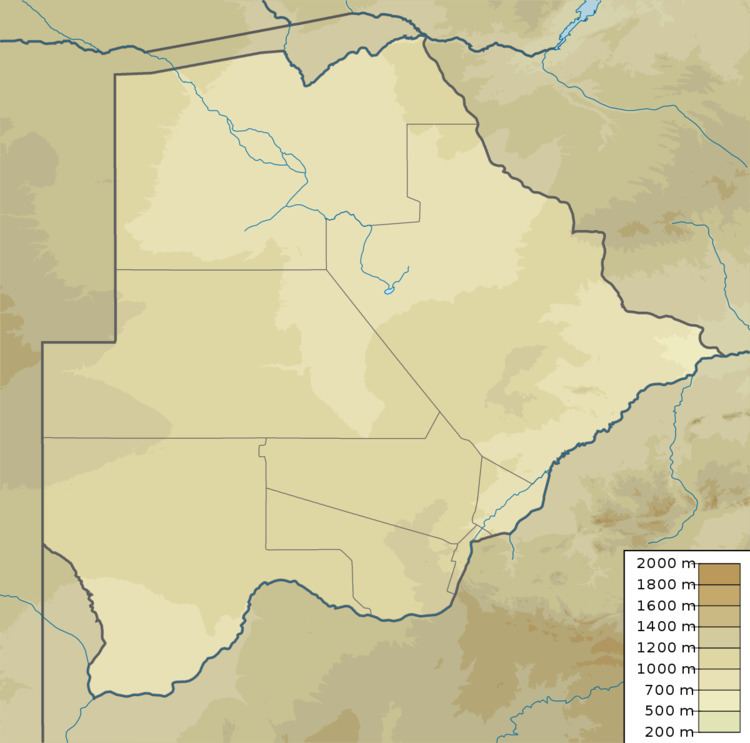Country Botswana Purpose Urban water supply Type of dam Zoned embankment Surface area 32 km² Construction began 1970 | Location North-East District Opening date 1973 Height 27 m Total capacity 85 million m³ | |
 | ||
Length 3.5 kilometres (2.2 mi) Similar Letsibogo Dam, Dikgatlhong Dam, Gaborone Dam, Thune Dam, Molatedi Dam | ||
The Shashe Dam is a dam on the Shashe River in Botswana that was built to supply water to the industrial city of Selebi-Phikwe. The large village of Tonota is just south of the dam.
Contents
Map of Shashe Dam, Botswana
Location and capacityEdit
The dam is about 25 kilometres (16 mi) southwest of Francistown. It is about 80 kilometres (50 mi) northwest of Selebi-Phikwe. The dam impounds the Shashe River. The Mairoro, Lunyi and Swiki tributaries of the Shashe also enter the reservoir. The artificial lake is 15 kilometres (9.3 mi) long and up to 4.2 kilometres (2.6 mi) wide. When full, the open-water surface covers almost 3,200 hectares (7,900 acres). It has a capacity of 85,000,000 cubic metres (3.0×109 cu ft).
ConstructionEdit
The dam was built as part of a major investment in infrastructure required to exploit copper-nickel ore reserves at Selebi and Pikwe, estimated in October 1969 to total 45.7 million short tons. The 3.5 kilometres (2.2 mi) long, 27 metres (89 ft) high zoned embankment was completed in 1973. Water from the dam is brought to Selebi-Pikwe by an underground pipeline.
In 1982 it was found that groundwater from the local wells in Francistown had high levels of nitrate, and was also inadequate to meet public demand, so the public water supply for that city was changed over to using water from the Shashe Dam. The Shashe Dam water works, off the Francistown road to the north of the Tonota Development Plan Area, also supplies potable water to Tonota.
Reservoir usageEdit
The total potential yield of fish from the reservoir has been estimated at over 50 tonnes per year. The reservoir is used for subsistence, commercial and sports fishing. The reservoir is also used by sailing club. Turtles, fish, otters, Nile monitors and many different birds use the reservoir. The dam shows traces of human pollution such as litter around and in the water. In February 2009 the Water Utilities Corporation was forced to suspend all activities at the dam after an outbreak of cholera was traced to its water.
